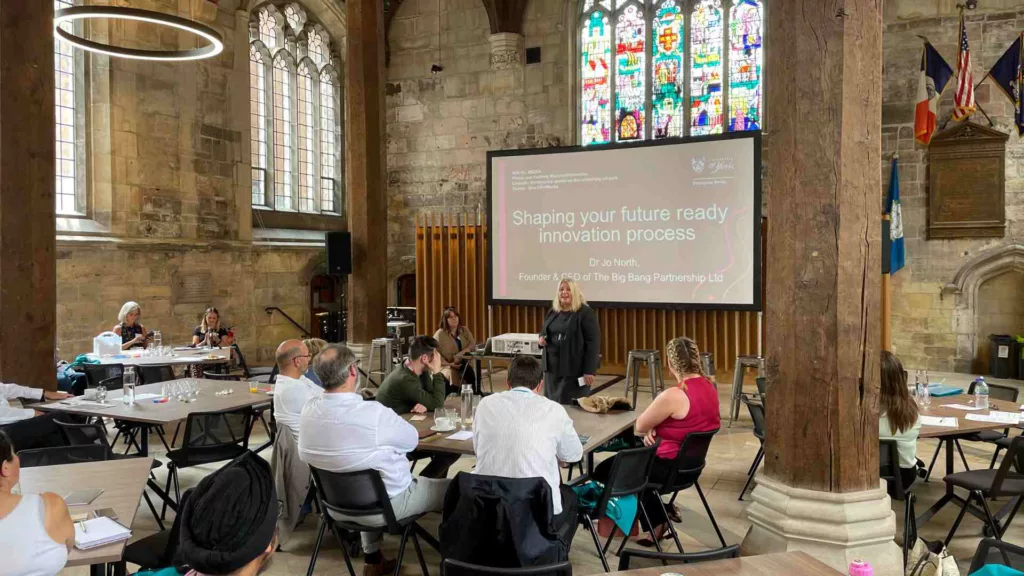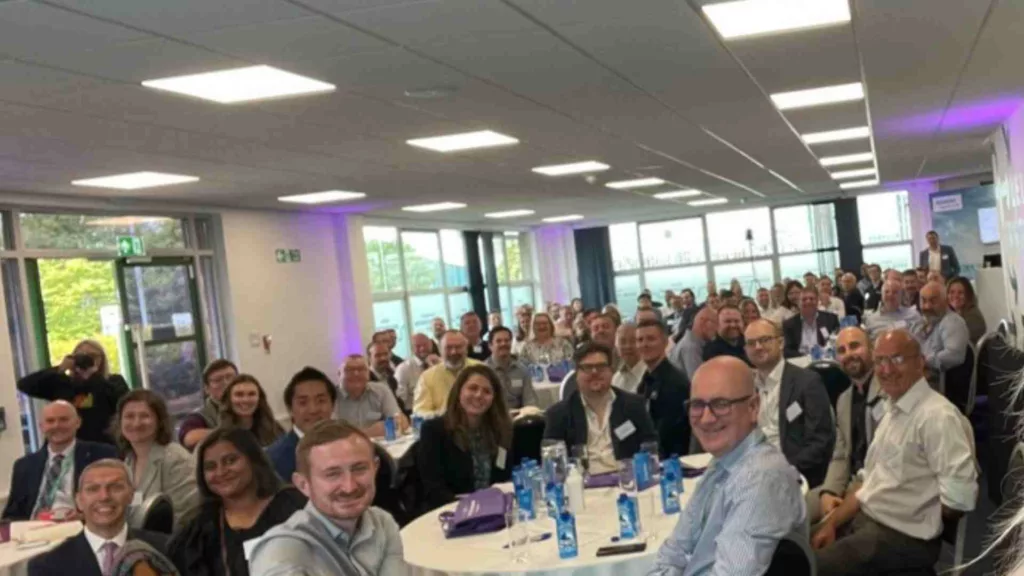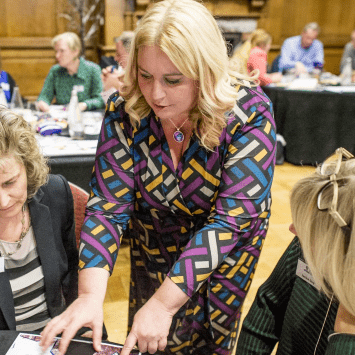Posted in Blog, Entrepreneurship, Facilitation, Intrapreneurship, Self confidence, Virtual Facilitation by Jo North
Are you ready to captivate your audience and leave a lasting impression? Whether you’re a seasoned presenter or just starting out, improving your presentation skills is essential for success. In today’s world, being able to communicate effectively and confidently is a valuable asset. Fortunately, there are proven techniques that can help you unleash your inner speaker and take your presentations to the next level. From mastering body language to crafting compelling narratives, this article will guide you through practical tips and techniques that will elevate your presentation skills. Get ready to engage your audience, inspire action, and make a lasting impact. Let’s dive in and discover how you can become a more confident and influential speaker.
The Importance of Effective Presentation Skills
Effective presentation skills are crucial in various aspects of life, whether you’re delivering a business proposal, pitching an idea, or speaking at a conference. When you have the ability to communicate your message clearly, concisely, and with confidence, you instantly become more influential and persuasive. Strong presentation skills not only help you convey information effectively but also ensure that your audience remains engaged and receptive to your ideas.
To become an effective presenter, it’s important to understand the key elements that contribute to a successful presentation. These include body language, voice modulation, storytelling, visual aids, and audience engagement. By mastering these techniques, you can captivate your audience, convey your message with impact, and leave a lasting impression.

Overcoming Fear and Nervousness
One of the biggest challenges in public speaking is overcoming fear and nervousness. It’s natural to feel anxious before a presentation, but with the right techniques, you can manage your nerves and deliver a confident performance.
Firstly, preparation is key. The more you practice and familiarize yourself with your content, the more confident you’ll feel. Rehearse your presentation multiple times, focusing on your delivery, body language, and timing. This will help you become comfortable with the material and reduce anxiety.
Secondly, positive self-talk and visualization can work wonders. Instead of dwelling on negative thoughts, focus on positive affirmations and visualize yourself delivering a successful presentation. This will help build your confidence and reduce anxiety.
I used to be a nervous wreck before presentations. I was so bad that a senior colleague pulled me to one side and needed to sort it out! And that’s what I did. I studied presentation skills, and took every opportunity I could to give a presentation. Making sure that I was presenting often, so that the exposure simply got me used to doing it, helped immensely. I rehearsed, videoed myself and got a great presentation coach. That was a good number of years ago now. Today I look forward to presenting. I still get a few butterflies before a big, important event, but I now know how to manage them and use them to elevate my performance.
I’m also focused on interesting content and audience engagement over perfection. Remember that mistakes are a part of the learning process. Even the most experienced speakers make mistakes, so don’t be too hard on yourself. Embrace the opportunity to learn and grow from any mishaps and remember that your audience is often more forgiving than you think.
Understanding Your Audience
To deliver a compelling presentation, it’s essential to understand your audience and tailor your message accordingly. Start by conducting research to gain insights into their demographics, interests, and expectations. This will help you align your content and delivery with their needs and preferences.
Consider the level of knowledge your audience has on the topic and adjust your content accordingly. Avoid using jargon or technical terms that may confuse them. Instead, use language that is clear, concise, and easy to understand. By speaking their language, you’ll be able to establish a stronger connection and ensure that your message resonates with them.
Additionally, be mindful of cultural differences and sensitivities. What may be acceptable or relevant in one culture may not be in another. Adapt your presentation style to suit the cultural context, ensuring that you respect and engage with your audience on a deeper level.

Crafting a Compelling Narrative
Humans are wired to respond to stories. Crafting a compelling narrative is a powerful way to engage your audience and make your message memorable. Start by outlining the structure of your presentation, ensuring that it has a clear beginning, middle, and end.
In the beginning, introduce your topic and establish its relevance. Grab your audience’s attention with a compelling opening that sparks curiosity or emotion. This will set the stage for the rest of your presentation.
In the middle, develop your main points and arguments, using examples, anecdotes, and data to support your claims. Weave these elements into a cohesive narrative that builds momentum and keeps your audience engaged.
In the end, summarize your key points and provide a strong conclusion that leaves a lasting impression. Consider using a call to action to inspire your audience to take the next step or make a change based on your presentation.
Remember to structure your narrative in a way that is easy to follow and understand. Use transitions and signposts to guide your audience through the different sections of your presentation, ensuring that they can follow your line of thought effortlessly.

Using Visual Aids Effectively
Visual aids are powerful tools that can enhance your presentation and help convey complex information in a digestible format. When used effectively, they can reinforce your message, make it more memorable, and increase audience engagement.
Choose visual aids that are relevant, visually appealing, and easy to understand. This can include slides, videos, infographics, or props. Make sure your visual aids complement your spoken words and do not distract from your message.
Keep your visual aids simple and uncluttered, using clear fonts, colors, and visuals. Use bullet points or key phrases rather than lengthy paragraphs of text. This will ensure that your audience can easily read and comprehend the information without being overwhelmed.
Remember that visual aids should support your presentation, not replace it. Use them as a tool to emphasize key points, provide visual examples, or illustrate data. Avoid reading directly from your slides or relying solely on visual aids to convey your message. Your words and delivery should always take center stage.
Practicing and Rehearsing Your Presentation
Practice makes for great performance, and the same holds true for presentations. To deliver a confident and polished performance, it’s crucial to practice and rehearse your presentation multiple times.
Start by creating a dedicated practice space where you can focus and eliminate distractions. Set up your visual aids, if any, and simulate the actual presentation environment as closely as possible. This will help you become familiar with your surroundings and reduce any surprises on the day of your presentation.
Rehearse your presentation out loud, paying attention to your delivery, timing, and body language. Practice transitions between slides or sections to ensure a smooth flow. If possible, record yourself or ask a trusted friend or colleague to provide feedback on your performance.
As you practice, be mindful of your body language and nonverbal cues. Stand tall, maintain eye contact, and use gestures that reinforce your message. Practice breathing exercises to help manage nerves and project your voice with clarity and confidence.
The more you rehearse, the more comfortable you’ll become with your material. This will allow you to focus on engaging with your audience and delivering a compelling presentation.
Nailing Virtual Presentations: Tips for Online Meetings and Video Calls
In today’s digital age, business professionals frequently find themselves presenting to groups of people over video calls, conference calls, or in a virtual presentation setting. The good news is that this online format offers easier access and more flexibility. However, it also demands a unique set of presentation skills. The most important thing to remember is that the right presentation skills, whether in-person or online, can leave positive impacts, advancing your career or achieving positive change.
Know Your Tech
The first step in preparing for an online presentation, such as a job interview or a project update to senior leaders, is to become comfortable with the technology. Familiarize yourself with the platform you’ll be using, understand its features, and know different ways to present information. Whether you’re using Microsoft PowerPoint or another tool, make sure you know how to navigate your slide deck, share your screen, and troubleshoot common technical issues. With practice, this will become second nature.
Craft Your Presentation
Next, craft your own presentation. The use of visual aids such as graphs, infographics, word clouds, or even simple bullet points in serif fonts can dramatically enhance the retention of key takeaways. A great idea is to divide your presentation into small, digestible sections. This makes it easier for your audience, be it team members or senior leaders, to follow along and comprehend the material. It’s also a good idea to include a written report or summary for reference, as this provides an opportunity for those who had a hard time following the discussion to review the points made.

Be Clear, Concise and Engaging
An important skill in online presentations is managing the flow of information. In virtual settings, it’s common for the presenter to lose the audience’s attention due to screen fatigue or distractions. Therefore, keep your slide deck clear, concise, and engaging. Informative presentations need to balance being detailed enough to cover the subject matter, yet simple enough to keep your audience engaged.
Verbal communication skills are vital, but nonverbal communication can be even more crucial in a virtual presentation. Simple actions such as looking into the camera can simulate eye contact, giving your audience the feeling of a more personal connection. Moreover, your expressions, posture, and gestures can also add depth to your message, making your presentation more dynamic.
One of the top tips for good delivery in a virtual environment is to engage your audience. Unlike in-person presentations, where you can see immediate reactions and adjust your approach accordingly, online presentations can often feel like you’re speaking into a void. Therefore, periodically asking for feedback, conducting polls, or simply opening the floor for questions can be highly effective. This strategy not only encourages participation but also ensures your important points are well-understood.
Get Off to a Good Start
The start of the presentation is a vital part of the process. Use this time to present the agenda, define the presentation format, and set expectations. Let your audience know how and when they can ask questions. This can range from leaving questions to the end of the presentation to asking questions as they come up.
Practice Makes for Great Performance
Lastly, practice makes for great performance. One common way to improve your presentation skills is to practice in front of a mirror, record yourself, or present to small groups before the main event. This will help you to spot areas of improvement and become more comfortable and confident with your presentation material.
With the right presentation tips and practices, you can master the art of virtual presentations and make every online meeting count. This not only helps in your professional growth but also contributes to better and more efficient remote working cultures.
Stage Presence in front of a Large Audience
It’s interesting that some people prefer presenting to small audiences who they know at work, whereas others feel more comfortable in the comparative anonymity of a large audience from a big stage.
The subject matter of a presentation may be of paramount importance, but what captures the hearts of audience members often is the presenter’s stage presence. Just think of the best presenters you’ve seen, perhaps during a TED Talk, where the speaker’s charisma, energy, and connection to the audience made the information resonate on a whole new level.

How to Elevate Your Stage Presence
One of the soft skills that play a crucial role in shaping great presentations is the speaker’s stage presence. Being in front of an audience can be daunting, and it’s not uncommon to experience stage fright. However, the great way to confront and overcome this is by being thoroughly prepared and practicing the presentation until you become a more confident individual. Your future career may well depend on these moments of public speaking, as it’s often a means to demonstrate your knowledge, ability, and leadership skills.
The most important thing to remember while delivering a presentation on a big stage is that your audience is your target. You still need to tailor your presentation format and content to their interests and level of understanding. But even with the perfect slide deck, a good delivery requires more than just stating facts and figures.
Verbal communication skills are, of course, essential, but your hand gestures, facial expressions, and body language also contribute to how your message is perceived. Research suggests that the majority of our communication is non-verbal, so hand gestures can help emphasize important points or express passion about your topic.
Additionally, your stage presence can be significantly improved with emotional intelligence. Knowing when to raise or lower the volume of your voice to highlight key points, or sensing when your audience needs a moment to absorb the information, demonstrates a deep understanding of group dynamics.
A personal story or anecdote related to your topic can also be a great way to connect with your audience. Stories not only make your presentation more relatable but also make the data and information you present more memorable.
Dealing with Stage Fright
Dealing with stage fright is a common concern for many. One effective strategy to combat this is taking a few deep breaths before stepping onto the stage and throughout the presentation. Deep breathing can help to calm your nerves and maintain your composure, allowing you to deliver your presentation with confidence and poise.
Remember, mastering the art of stage presence for persuasive presentations is a journey. With each presentation you deliver, you learn something new and get a step closer to becoming one of the best presenters. Take every opportunity you get to present in front of an audience as a chance to improve and perfect your skills. With determination and practice, your stage presence can significantly impact your future career and personal growth.
Engaging with Your Audience During the Presentation
Engaging with your audience is a crucial aspect of effective presentations. It helps build rapport, captures attention, and keeps your audience invested in your message. Here are some techniques to engage with your audience during your presentation:
1. Start with a compelling opening: Grab your audience’s attention from the start by sharing a relevant story, asking a thought-provoking question, or using a surprising statistic. This will set the tone for an engaging presentation.
2. Use interactive elements: Incorporate interactive elements into your presentation to keep your audience actively involved. This can include asking questions, conducting polls, or encouraging small group discussions. This not only keeps your audience engaged but also provides valuable insights and perspectives.
3. Encourage audience participation: Invite your audience to share their thoughts, ask questions, or provide feedback. This creates a two-way dialogue and fosters a sense of collaboration. Be open to different viewpoints and actively listen to your audience’s input.
4. Tell relatable stories: Share personal anecdotes or real-life examples that your audience can relate to. This helps humanize your presentation and makes it more relatable. When your audience sees themselves in your stories, they become more engaged and invested in your message.
5. Use humor strategically: Appropriate humor can break the ice, lighten the mood, and create a memorable experience. Incorporate relevant jokes or lighthearted anecdotes to keep your audience entertained. However, be mindful of cultural sensitivities and avoid offensive or inappropriate humor.
Remember that engaging with your audience is an ongoing process. Continuously assess their reactions and adjust your delivery accordingly. Pay attention to their body language, facial expressions, and verbal cues to gauge their level of engagement. Adapt your presentation style in real-time to ensure that you maintain their interest and attention.
Mastering the Q&A Session: Tips for Handling Difficult Questions and People
- Anticipate and Prepare: One of the best strategies for dealing with a Q&A session after a presentation is to anticipate potential questions. During your preparation, try to identify any areas in your presentation that might provoke questions or seem unclear. Prepare comprehensive answers for these possible questions to feel more confident during the Q&A. Adopt a growth mindset to help you listen and avoid becoming defensive.
- Create a Safe Space: Encourage your audience to ask questions by creating an open and accepting environment. Make it clear that all questions are welcome, even challenging ones. This creates a two-way dialogue and ensures everyone feels comfortable contributing to the discussion.
- Listen Carefully: When a question is asked, listen attentively. Understand the core of what’s being asked before you start to respond. If the question is complex, it’s perfectly fine to paraphrase it back to the person to ensure you’ve understood correctly.
- Stay Calm and Composed: Dealing with ‘difficult’ people or questions can be challenging. Maintain your composure and treat every question with respect, regardless of how it’s delivered. The way you respond to a challenging situation can set the tone for the rest of the Q&A session.
- Don’t Rush Your Answers: Take a moment to think before answering a difficult question. It’s better to pause and formulate a thoughtful response than to rush and potentially provide an inaccurate or incomplete answer.
- It’s Okay Not to Know: If you don’t know the answer to a question, it’s fine to admit it. Honesty is appreciated, and it’s better to say you don’t know but will find out, rather than trying to bluff your way through.
- Control the Narrative: If you get a confrontational or off-topic question, don’t get derailed. Politely bring the discussion back on track. You might say, “That’s an interesting point, but let’s focus on the subject at hand. We can discuss that further after the presentation.”
- Use “We” Instead of “I”: When dealing with difficult questions, try to use “we” instead of “I”. This can help diffuse a tense situation and foster a sense of collaboration and shared understanding.
- Follow Up: If a question requires a detailed answer or if you need to check some facts before you can respond fully, take the person’s contact details and promise to follow up. This shows your commitment to providing accurate information and leaves a positive impression.
- Conclude Graciously: Finally, conclude your Q&A session on a positive note, thanking your audience for their active participation and thought-provoking questions.
The Q&A session is a valuable opportunity to further engage your audience and deepen their understanding of your topic. By managing this session effectively, even when faced with ‘difficult’ people or challenging questions, you can reinforce your message and leave a lasting, positive impact.
Additional Resources for Improving Presentation Skills
To further enhance your presentation skills, here are some additional resources that you can explore:
– **Public speaking courses**: Enroll in public speaking courses or workshops that offer structured training and practice opportunities. These courses often provide valuable feedback and guidance from experienced instructors.
– **Books on public speaking**: There are numerous books available that provide insights and tips on improving public speaking skills. Some popular titles include “Talk Like TED” by Carmine Gallo and “Presentation Zen” by Garr Reynolds.
– **Online tutorials and videos**: Explore online platforms such as YouTube or TED Talks for tutorials and videos on public speaking. These resources can offer valuable tips, techniques, and inspiration from renowned speakers.
– **Join public speaking clubs**: Consider joining organizations like Toastmasters International, where you can practice and improve your public speaking skills in a supportive and constructive environment. These clubs often provide opportunities for networking and feedback.
– **Seek feedback from peers or mentors**: Share your presentations with trusted peers or mentors and ask for their feedback. Their insights can help you identify areas for improvement and refine your delivery.
Remember, improving your presentation skills is an ongoing journey. Continuously seek opportunities to practice, learn, and grow. With time and dedication, you can unleash your inner speaker and become a confident and influential presenter.
Next Steps
In today’s fast-paced world, effective presentation skills are a valuable asset that can open doors, inspire action, and make a lasting impact. By mastering techniques such as overcoming fear and nervousness, understanding your audience, crafting compelling narratives, using visual aids effectively, practicing and rehearsing, and engaging with your audience, you can take your presentations to the next level.
Remember, becoming a confident and influential speaker is a gradual process that requires practice, dedication, and a willingness to learn. Embrace the journey and take advantage of the resources available to you. Unleash your inner speaker, captivate your audience, and leave a lasting impression.
If you’re ready to elevate your presentation skills to new heights, remember – transformation is only a conversation away. My team at The Big Bang Partnership Ltd and I have a wealth of expertise, tailored approaches, and innovative strategies waiting for you.
There is no one-size-fits-all approach when it comes to presentation skills, and we are here to provide you with the specific tools and techniques that best suit your style and needs. From conquering stage presence to mastering virtual presentations, we’re committed to helping you present your best self, every time.
Don’t hesitate to take the first step towards becoming an exceptional presenter. Your audience is waiting to be captivated by your presentation prowess, and we’re here to guide you on your journey. Reach out to us at The Big Bang Partnership Ltd today, and let’s unlock your full potential together. The next chapter of your professional growth starts here!


